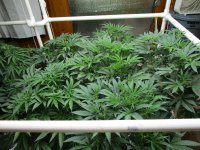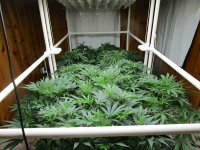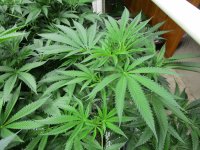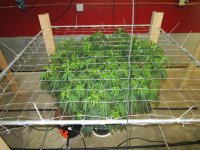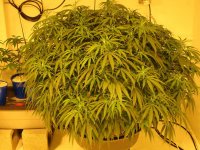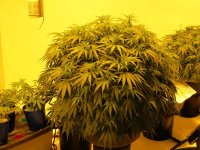Precisely!thank you! i have 21 years of hps, metal halide, and cmh experience and 5 years with leds. i will never go back to hps simply because of the wasted electrical energy needed to operate them. both the huge amount of IR produced by the lamp and the energy needed to keep temperatures in check.
-
As of today ICMag has his own Discord server. In this Discord server you can chat, talk with eachother, listen to music, share stories and pictures...and much more. Join now and let's grow together! Join ICMag Discord here! More details in this thread here: here.
You are using an out of date browser. It may not display this or other websites correctly.
You should upgrade or use an alternative browser.
You should upgrade or use an alternative browser.
CMH vs LED vs HPS
- Thread starter Gerardbutler79
- Start date
greyfader
Well-known member
on the subject of radiant heat and heat from electrical resistance.
heat is given off by electrical resistance. so both a 1k watt hps and a 1k watt led fixture produce the same amount of heat from resistance.
"Radiant heat, also known as thermal radiation, is the transfer of electromagnetic radiation which describes the heat exchange of energy by photons. Radiant heat is a mechanism for heat transfer which does not require a medium in which it propagates (unlike convection and conduction)."
in the grow room, photons in the infrared range, which led fixtures do not have unless diodes in the infrared range are included in the build, travel through the medium (air) without heating it.
radiant heat, thermal radiation, heats the surface of the targets it hits.
radiant energy from the sun travels 93.77 million miles through super cold space yet still heats the surfaces it hits on earth.
so, when computing cooling needs for a space i have needed 4000 btu per fixture when using hps lighting.
and 2000 btu when using leds.
this is simply because the hps produces a large amount of radiant heat in addition to the heat from resistance.
the plant evolved using radiant heat and, after using leds for the last 5 years, i now believe that radiant heat is involved with internal signaling and metabolic rate.
these photons in the infrared range are not used in photosynthesis but may be necessary for normal growth.
we have the option to build grow lights with leds plus an infrared source.
the led spectrum is more complete for photosynthesis than hps but lacks radiant heat.
supplementing a led light with hps or cmh just to get radiant heat is expensive. and duplicates parts of the led spectrum without making it more complete for photosynthesis.
this is why i'm trying cheap incandescents in conjunction with leds. they actually produce more photons in the dark red, far-red, and infrared ranges than hps lamps per watt.
heat is given off by electrical resistance. so both a 1k watt hps and a 1k watt led fixture produce the same amount of heat from resistance.
"Radiant heat, also known as thermal radiation, is the transfer of electromagnetic radiation which describes the heat exchange of energy by photons. Radiant heat is a mechanism for heat transfer which does not require a medium in which it propagates (unlike convection and conduction)."
in the grow room, photons in the infrared range, which led fixtures do not have unless diodes in the infrared range are included in the build, travel through the medium (air) without heating it.
radiant heat, thermal radiation, heats the surface of the targets it hits.
radiant energy from the sun travels 93.77 million miles through super cold space yet still heats the surfaces it hits on earth.
so, when computing cooling needs for a space i have needed 4000 btu per fixture when using hps lighting.
and 2000 btu when using leds.
this is simply because the hps produces a large amount of radiant heat in addition to the heat from resistance.
the plant evolved using radiant heat and, after using leds for the last 5 years, i now believe that radiant heat is involved with internal signaling and metabolic rate.
these photons in the infrared range are not used in photosynthesis but may be necessary for normal growth.
we have the option to build grow lights with leds plus an infrared source.
the led spectrum is more complete for photosynthesis than hps but lacks radiant heat.
supplementing a led light with hps or cmh just to get radiant heat is expensive. and duplicates parts of the led spectrum without making it more complete for photosynthesis.
this is why i'm trying cheap incandescents in conjunction with leds. they actually produce more photons in the dark red, far-red, and infrared ranges than hps lamps per watt.
greyfader
Well-known member
nice plants, they look really healthy. but it's not because hps is superior to leds.I'll show you what hps does and why i stick with it..not interested in science on paper..this 70 day old vegged exodus cut cheese x agent orange f1 2009 has just started flowering under a 400w hps...pure organics and the best pics you'll see on the Internet of a grower who knows his shit...don't need lessons sunbeam..you need learning!
you'll eat those words in front of me..watch and learn playboy...oh and I'll document 2 roadkills under a 400w hps in a m3 area to show my regard for hps..you enjoy your science..the whole reason I originally quoted what I did here was to wait for the parrot fish paragraph brigade come on and baffle you with bullshit,exactly what you did...can't have anyone online calling led shit now can we?...perish the thought!!!!
below i will show my current grow that is being conducted with 5000k walmart bulbs only during the vegetative phase.
then some of my plants grown under DE hps lights at the end of veg.
please let me know which light did a better job of vegetative growth.
the first 3 are my current grow and the last 3 are all different plants from my last effort with hps over 5 years ago.
Attachments
The main source of this problem is the LEDs.
All other processes that happen regarding Ca for instance are just by product of those lights
Naive people believe that everyone wants what's best for them, nasa, gov org, scientists
Nothing can be further from the truth,
They don't want you growing meds
They don't want you to get high
They don't want you to get a good price for your top notch bud (your under cutting them )
)
If you believe that big tech companies and government institutions are there for your own good you need to wake up.
LEDs are all the rave, leave the cannabis
alone for a sec, think why they are pushing them worldwide in every aspect of our life
You think it's because LEDs are better at making light ? Your naive or stupid.
They will try to combat this herb from many fronts, lights are just one of them.
All other processes that happen regarding Ca for instance are just by product of those lights
Naive people believe that everyone wants what's best for them, nasa, gov org, scientists
Nothing can be further from the truth,
They don't want you growing meds
They don't want you to get high
They don't want you to get a good price for your top notch bud (your under cutting them
If you believe that big tech companies and government institutions are there for your own good you need to wake up.
LEDs are all the rave, leave the cannabis
alone for a sec, think why they are pushing them worldwide in every aspect of our life
You think it's because LEDs are better at making light ? Your naive or stupid.
They will try to combat this herb from many fronts, lights are just one of them.
Vegg69guerilla
Active member
you can sit here though till your blue in the face..ppl go with what they know..yrs ago I studied and researched that the sun at the highest and hottest point of its day emits 56000 lumens onto the earth surface every m3..which is fucking powerful in laymen terms..56000 lumens per m3 shows you exactly the given power at high peak...so I introduced a 400w hps high output 56000 lumen hps red sunmaster into said equivalent area and found absolutely astonishing results..I never pushed a 600w..the one time I did and light pollution invaded everything..because I was replicating more than even the sun could manage in a m3 area...heat and cost are issues with some ppl regarding hps and cmh but if dialled within controlled areas correctly will far surpass any led system...might sound a bit condescending to ppl showing the truth in value but ppl won't change the led craze..it suits the market and the real agenda to where weeds going nowadays...I've tried many samples under led and hps and somethings missing in the chemical make up of how the high performs..all I think attributed to these light spectrums that are not conclusive in replicating a beautiful red looking sunshine...and the high evaluations when comparing the two are suggesting this in my book...!!!!!
here-here.... i agree nuthin compares to old-man-sol.......I've tried many samples under led and hps and somethings missing in the chemical make up of how the high performs..all I think attributed to these light spectrums that are not conclusive in replicating a beautiful red looking sunshine...and the high evaluations when comparing the two are suggesting this in my book...!!!!!
yrs ago I studied and researched that the sun at the highest and hottest point of its day emits 56000 lumens onto the earth surface every m3
I have read it's >1000W/m2, which is >100,000 lux.
PPFD is ~2000 µmol m-2 s-1
A conversion guide: solar irradiance and lux illuminance - Extrica
The standard for measuring solar irradiance utilizes the units of watts per meter squared (W/m2). Irradiance meters are both costly and limited in the ability to measure low irradiance values. With a lower cost and higher sensitivity in low light conditions, light meters measure luminous flux...
www.extrica.com
PPFD to Lux Conversion
I've used as little as 375W HPS+MH/m2 and as much as 1435W HPS/m2 with good results. My personal preference, balancing cost of electricity, heat, quality & yield for HPS was ~600W/m2. I have LED & CMH now.
Last edited:
smirnoff420
Well-known member
Yup. You can download apps that use the light sensor of a smartphone and and test for yourself. I get more than 100k on sunny days on 52N.
Corpselover Fat
Active member
Here's per month avarage daily light integrals for us

Assuming 16 hours of light the highest daily avarages are ~1000umol/s. But that's the avarage for a day. Daily peak is probably twice that.

Assuming 16 hours of light the highest daily avarages are ~1000umol/s. But that's the avarage for a day. Daily peak is probably twice that.
Brother Nature
Well-known member
Is it me or are there way more kooks on IC these days??
I don’t think it’s unique to IC, I think it’s just a consequence of social media. I’m new to posting here but have been browsing for years. A while ago Reddit used to have some great cultivation subs where growers would share a lot of valuable information and experiences. Now most of those subs are just people bragging and fishing for upvotes, and a lot of unproductive arguments.Is it me or are there way more kooks on IC these days??
To be fair, I’m a noob grower. I appreciate the honest discussion here between LED and HID lighting. It was enough for me to go buy a Cmh and give it a shot. I wish people could share, and disagree without the name calling. I get people are passionate and experienced about the subject, but the fighting really degraded the quality of these discussions! Thanks to everyone keeping it civil, even if provoked.
Keeping things on topic:
I’m officially in week 3 now of flowering, and the plants are looking great (for me). Temps are 78-86f in the day, and humidity is 45-50% in the day. I did fry a few leaves with a fungus gnat spray. It had “potassium salts of fatty acids” in it, and a lot of the plants did not appreciate it. I have since treated the soil with mosquito dunks, and that seems to be helping quite a bit. Another interesting observation. On of my plants a “Mexican skunk” mother was too tall at the end of stretch so I bent the stock down really hard. She has straightened up and is very close to the light. Even so, no signs of photo bleaching yet. I’ve had some strains bleach at about 10” from my ks3000.

Edit: ending week 3 just starting week 4 of flower.
Last edited:
Ca++
Well-known member
I have read it's >1000W/m2, which is >100,000 lux.
PPFD is ~2000 µmol m-2 s-1
A conversion guide: solar irradiance and lux illuminance - Extrica
The standard for measuring solar irradiance utilizes the units of watts per meter squared (W/m2). Irradiance meters are both costly and limited in the ability to measure low irradiance values. With a lower cost and higher sensitivity in low light conditions, light meters measure luminous flux...www.extrica.comPPFD to Lux Conversion
www.apogeeinstruments.com
I've used as little as 375W HPS+MH/m2 and as much as 1435W HPS/m2 with good results. My personal preference, balancing cost of electricity, heat, quality & yield for HPS was ~600W/m2.
My 6s are 92,000 lumens. So spread over a meter, that's 92,000 lux. If only I could put them all down without losses such as imperfect reflectors. I might really be doing 75,000 lux. My light meter, like most, is centered on green, and so won't read the amber light fully.
The 1000w is solar radiation that a solar cell can use. The article is about the struggle to convert between energy solar can use, and what we can see.
The 6 is really good for a meter. 100,000 lux is high, and anything beyond that a bit of a freak circumstance. If you can do 75,000 all day long, you have more light than that freak 1pm peak anyway. So keeping up with the needs of a 6 per meter, might actually be impossible. Some plants just don't want it. 500w a meter is a more reasonable prospect. With no need to change the lamps every 5 minutes.
60x60x12=43200 seconds per day
1.7umols/s x 600 = 1020
1020x43200=44,064,000 umol's or 44 mol per day.
Yay. My maths didn't fail me. Though my shades probably did.
Someone will want to see LED..
To get that same 1020 per second, with a 2.6umol capable fitting, 1020/2.6 = 392w of LED. However.. the LED was likely using 3umol LEDs and delivering 2.6 of them. While the 6 was making the 1.7 and likely not delivering them. No hope actually. To weigh this up, look at 600w LEDs replacing 1000w HIDs. The numbers align.
Corpselover Fat
Active member
I’ve had some strains bleach at about 10” from my ks3000.
Viparspectra doesn't really tell us how much light it produces, but it's about 1.5 times more than the cmh.
Ca++
Well-known member
Heat leaving an LED fixture through conduction (into the sink and air) and convection (the hot air rising)
The HID emits light because it gets hot. The LED emits more light when it's colder
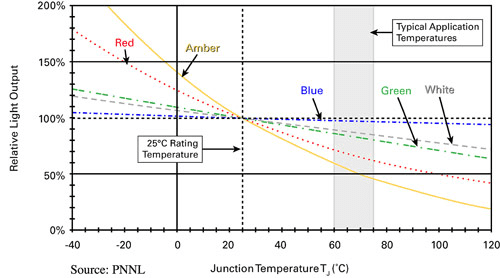
This is why adding a fan to your lights, can be a better use of power, than adding more lights.
This is why the air extract system should be linked to the LED fitting.
Look at the Thermal image again. The coloured picture in within a box that looks a bit like a picture frame. That box could be an air duct. The LED could be a QB style. This stuff already exists. Enabling a good proportion of the heat to be extracted away, without taking and air from the grow space.
A lighting manufacturer and hvac guy are not likely to come together with such an original idea. What we should be seeing though, are lighting batons that can be linked with flexi-duct. The box section would need a lid that comes off, to enable the lights to work without ventilation also. We have seen this here
If these covers were boxes, they could have a hole each end. A boxed light would need a self-resetting thermal fuse. While a big install would have a pressure differential switch, linked to dimming. Both are to stop the lights cooking if the extract failed.
I think I might be wasted on the customer service desk, but as long as somebody is profiting from it, I can live in hope of a kickback lol
Cerathule
Well-known member
That's correct, but photosynthesis is quantum based. A green photon can drive it (almost) equally like a red or blue one, but the more redshifted the wavelength gets, the less energy input you need for the same quantum flux.Lets say we have three LEDs. A red a green and a blue. Each emitting the same flux. Flux we can measure as watts, and it's 1w each.
I'm setting up a picture here, of three lights, with equal power output.
To us, as observers, the green is brighter. This is because our vision is centered on green (555). Our idea of brightness, is measured in lumens. We would measure the green as considerably brighter in lumens. Yet, in energy terms, there is no difference. This is why the 555 LED will be theoretically brighter on the lumen scale. It's because we can see it better, not because it's emitting more.
Ca isn't really phloem-mobile so it has a tendency to accumulate towards the end of xylemic pathways, and there, forming various complexes that you can see in some of the links posted. You find them mostly within leaves, that includes also fanleaves of course (thus may end up in ones product).Interesting points, and I’ve heard others mention similar issue with excess Ca. My question is why would Ca accumulate in the trichs? My understanding is the glandular trichromes are mostly Si in the form of Silicates. Depending on the pH silicate carries a negative charge, while Ca is always plus 2. So, it seems to me Ca wouldn’t chemically sub for Si in trichromes, unless it’s replacing 2x monovalent cations, or some other divalent cation.
Im thinking about trying a gravimetric analysis for Ca content on some of my old led grown bud, and my currently flowering bud under Cmh. My thought is : Calcine a sample of flower, dissolve residue in HCl, ppt out Ca and Mg as the carbonate with ammonium carbonate. The leftover insoluble should be mostly SiO2 and some transition metal oxides.
I’f there are any a measurable differences, that may provide some insight on mineral distribution between the two lighting sources.
But Ca is dependant on transpiration rates, ie. the plant distributes it with its normal waterflow, so plants generally do have some problems distributing it into their flowers. However, Cannabis may be an exception to this not doing things radically differently but the plant seems to be able to efficiently photosynthesize with many of its parts, and also translocate alot of nutrients around, even Ca from old leaves studies have shown this (Ca is also stored in vacuoles so it's very possible not a retranslocation of Ca that is chemically bound in cellwalls)
***
As for the different leave colours it may be not to nutritional status but maybe due to a response of the particular genetic of a certain wavelength in the spectrum leading to the buildup of some colourful compounds:
BTW many homegrowers are actually using PC vents to push the little LED heat down to the plant canopy as a means to get leaf surface temps into a more optimal range. Some genetics just feel better with warmer temps than the standard 25°C for C3 plants. Remember where Cannabis all is now home outside, and with what breeders work.
Also, there are other processes mostly chemical/enzymatic in nature and these are faster with adequate warmth.
Ca++
Well-known member
I have never seen a green photon said to drive photosynthasis as well as a blue or red, even though it carries more energy than a red.That's correct, but photosynthesis is quantum based. A green photon can drive it (almost) equally like a red or blue one, but the more redshifted the wavelength gets, the less energy input you need for the same quantum flux.
Ca++
Well-known member
Others still seem a little confused, so I will offer that link, that by now you no longer needDo you mind linking us to where you got those numbers regarding the heat produced by hps vs led? My understanding was that every watt creates an equal amount of heat, this amont precisely - 3.41 BTU/h. How are two 1000w fixtures producing unequal amounts of heat while using the same amount of energy, that doesnt make sense scientifically. If this were true, people would all flock to LED even more simply for needing less than 50% the hvac to run them.
How Hot Do LED Strips Get? Is It Normal? | Waveform Lighting
Edit: And another https://www.arrow.com/en/research-and-events/articles/leds-heat-and-you
A more reliable source might be Philips. Here they state that electricity to turned not to heat, but to light.
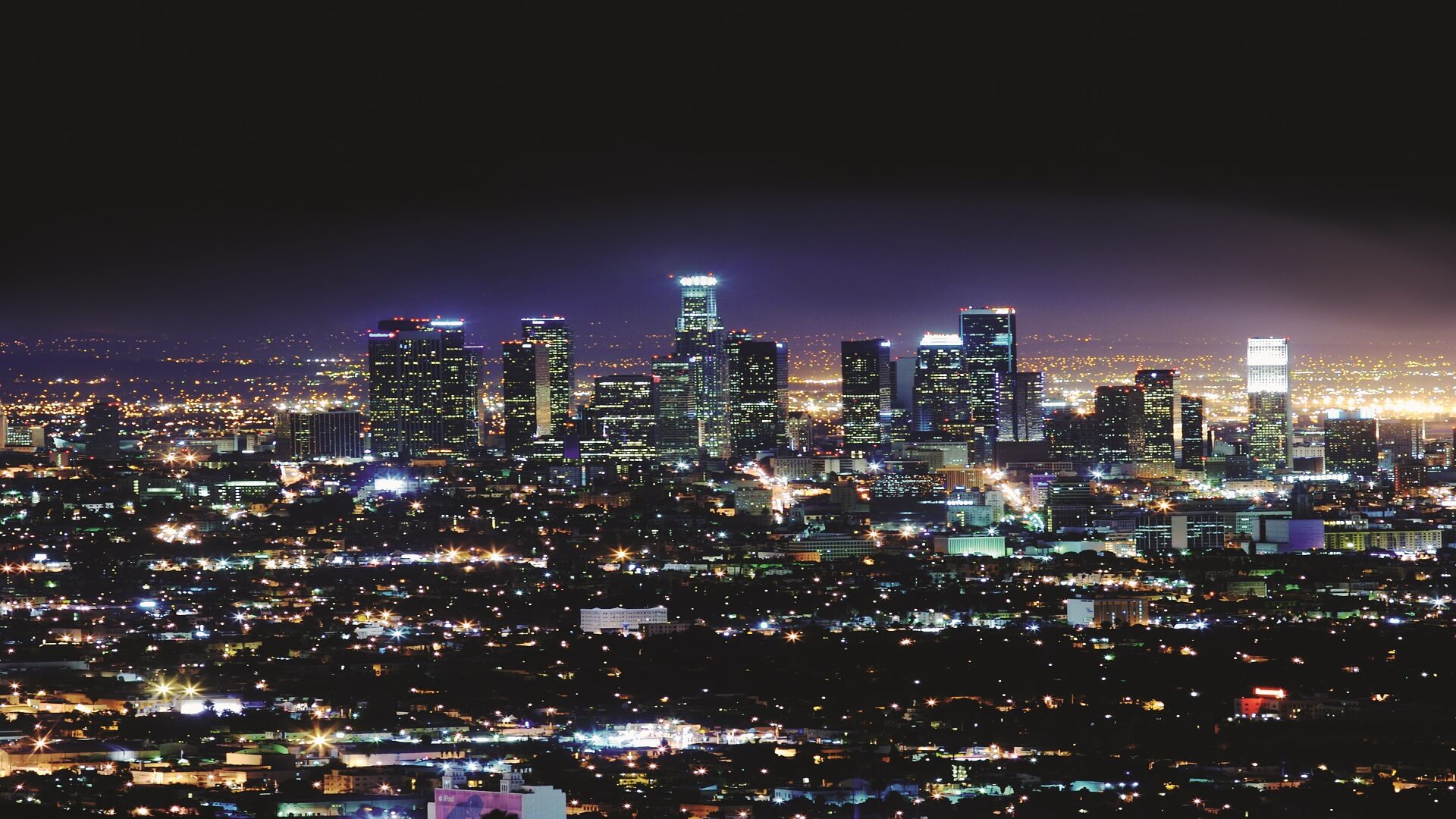
Sustainable LED lighting solutions | Philips lighting
Philips is a world-leading lighting brand that provides sustainable commercial lighting solutions. Efficient, high quality LED luminaires, lamps, and tubes for B2B.
When we talk about lighting efficiency as a percentage, this is what we are talking about. How well the light turns electricity to light, instead of other products. Primarily heat.
Last edited:
Ca++
Well-known member
Also, wavelengths are what they are. Blue photons do not become red photons. Photons are a wavelength of energy, shorter or longer, thats how it works.
sometimes a molecule can steal some of the light's energy. When this happens, the light changes color. The opposite can also happen; the molecule can give the light some energy. This also changes the light's color. Basically, any change in energy of light, changes its color
Stimulated Raman Scattering - a simple way to change the color of light: NOAA Physical Sciences Laboratory
US Department of Commerce, NOAA, Physical Sciences Laboratory
While the power consumed by the 1000w LED might make 330w of heat at source, the 670w of light created will still mostly heat the room through conversion to heat later. Though I would speculate a good portion of the heat is used to aid transpiration. The evaporative cooling effect. I'm not sure I fancy that maths at 3am
Last edited:
Raman scattering occurs at extremely low levels, only about 1 out of 10 million photons experiences Raman shift when interacting with a molecule. The vast majority goes through elastic scattering, aka no frequency shift.There you see green light robbed of power, making it red.Stimulated Raman Scattering - a simple way to change the color of light: NOAA Physical Sciences Laboratory
US Department of Commerce, NOAA, Physical Sciences Laboratorypsl.noaa.gov
While the power consumed by the 1000w LED might make 330w of heat at source, the 670w of light created will still mostly heat the room through conversion to heat later. Though I would speculate a good portion of the heat is used to aid transpiration. The evaporative cooling effect. I'm not sure I fancy that maths at 3am

